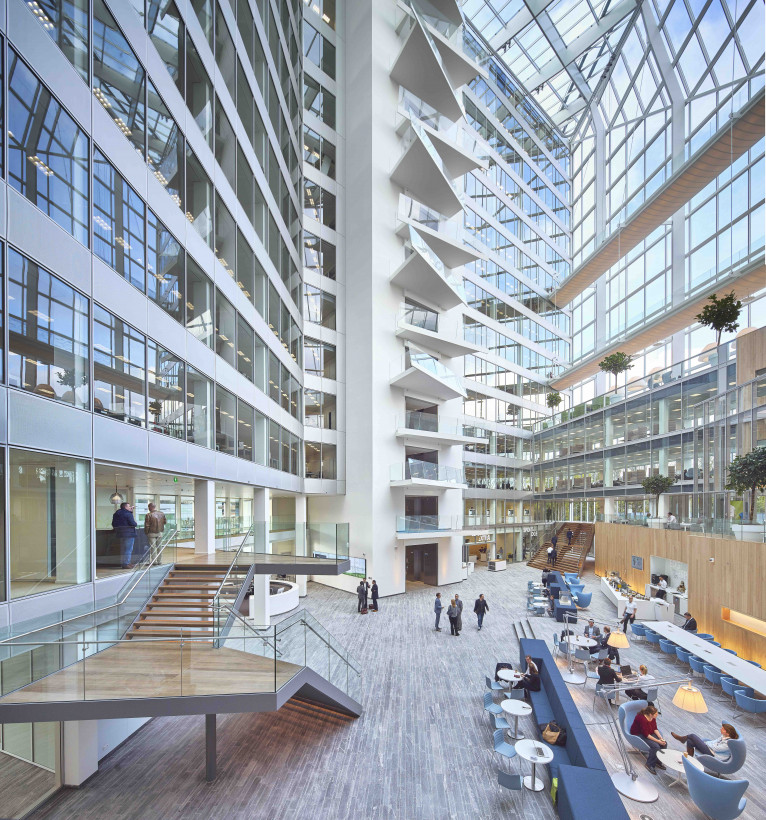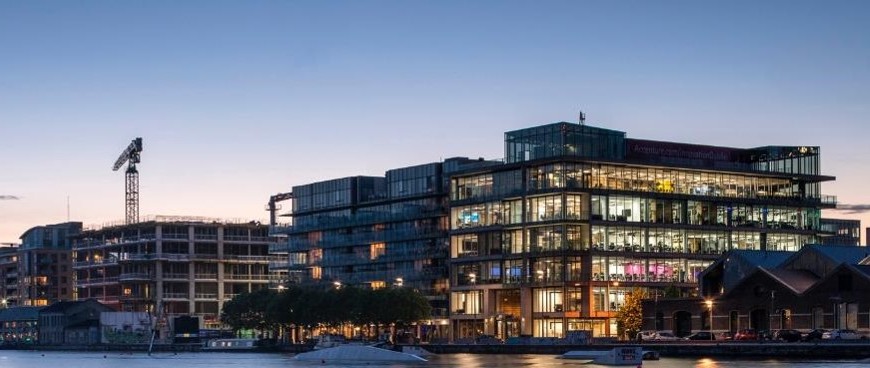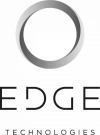
You won’t hear this often, but let’s talk about office buildings. They’re pretty awful. Most office buildings waste energy and productivity, use rooms and desks inefficiently and the air quality and the sedentary office lifestyle are often detrimental to employee health. But it doesn’t have to be like that.
The office building of the future already exists today — often with cool future-appropriate sci-fi names like The Edge, The Dock or The Crystal. With the help of data analytics, a wide array of sensors and the Internet of Things (IoT), these buildings are what all our offices should aspire to be: efficient, comfortable and sustainable.
But this comes with a potential cost. With sensors collecting data around the clock, how does that affect our privacy?
Wasted space and energy
About 97% of the current buildings in Europe are considered not energy efficient — about 30 billion square meters wasting energy. By using sensors to measure crowd levels in different spaces, smart offices can get fresh air, heating, and lighting where it is actually needed —and save money and energy in the process. An empty floor or desk simply doesn’t need heating, fresh air or lighting.
The same goes for wasted office space. Little under 300.000 desks remain unoccupied in England every day — an astounding statistic when a single desk can cost thousands of euros to maintain. There is even a company called LiquidSpace that deals in unused office space.
Smart offices try to minimize this problem with sensors that reveal if desks or conference rooms are available, where you can park your car and subsequently adjust the HVAC (heating, ventilation, air conditioning) settings for the unused space.
One of these smart offices is the aforementioned The Edge, an Amsterdam-based high-rise that has been lauded as ‘the most sustainable building in the world’ as well as the smartest. It was developed by OVG Real Estate in 2014, which recently announced EDGE Technologies as their newest company. Its main mission: Developing more high-tech, sustainable buildings that support workplace health.
A working day in The Edge is highly personalized and guided by a smartphone app that is in constant sync with the office. The building knows your schedule, tells you where to park, which desk to use (the work environment is flexible, without set desk spaces) and adjusts lighting and temperature settings as you go about your day.
Create better buildings
According to Coen van Oostrom, founder and CEO of EDGE Technologies — gathering data will provide valuable lessons. “It will answer questions such as — do people dim lighting when giving presentations? Do people spend more time in areas with more plants? Do people tend to arrive at work later in the winter months?” explains van Oostrom to TNW. “This way we adapt existing working environments and plan out our future buildings better.”
New buildings like The Edge provide a great chance to build a smart office from the ground up, but retrofitting old buildings is just as important. As mentioned earlier, the vast majority of buildings in Europe are far from energy efficient.
To tackle this problem, the European Union past legislation that requires “member states to develop national long-term strategies to support the cost-saving renovation of public and private buildings, with a view to reducing emissions in the EU by 80-85% compared to 1990 levels.” By 2050, Europe should be full of smart and more energy efficient buildings.
Van Oostrom: “The key motivator to retrofit offices is that making an existing building smart, prolongs its lifespan, which in the end, considerably saves money. This was the case with our latest project in the USA, where we developed Unilever’s US headquarters. We managed to reduce the building’s energy consumption by 50 percent and increased its usable space by 28 percent.”

10,000 sensors
The Dock, consultancy giant Accenture’s technology facility in Dublin, also shows that a lot can be achieved with retrofitting. The retrofitted office is now one of the most connected buildings in the world, with over 10,000 sensors (“two per square meter”) director Julie Spillane told TNW via mail.
Spillane writes: “One of the prototypes that we are exploring is how to bring the connected ecosystem to our team’s fingertips with a mobile app that contains everything needed throughout their workday. From locating workspaces, to connecting teams, to simply finding the nearest cup of coffee.”
The Dock makes it look easy, but not all transformations are as smooth.
Two years ago, journalists at the British newspaper The Daily Telegraph looked under their desk and found a small black box which read “OccupEye”. The device checks if employees are at their desk and make sure no energy is wasted on air conditioning or heating for empty cubicles. Arguably a good thing, but the employees were worried that their boss was monitoring their movements (even in the bathroom) and so the boxes were removed.

Privacy assistants
Most sensors in smart offices aren’t so exposed like the OccupEye, however. Sensors and IoT-tools are often integrated or embedded into smart offices, without any user interface. Especially in new smart offices, people might simply just not notice that their environment is being monitored — and therefore unable to take control of their privacy.
One solution to this, researchers from Carnegie Mellon propose are privacy-aware smart buildings that make the invisible, visible.
“We envision privacy assistants residing on individual smartphones, which selectively inform their owners about data collection in their vicinity. These assistants make invisible data collection visible, support users in configuring privacy settings, where available,” they write in a recent paper, co-sponsored by DARPA and the National Science Foundation.
This would be a great step towards making people more privacy-aware of their future smart offices — especially if your own device can broadcast your personal privacy settings to our future smart buildings. But whether these new techniques make it into production will depend on how much people value their own privacy.
Data collection also needs to be safe. The Internet of Things, especially, does not have a great track record when it comes to data security. Recently, hackers got access to a casino database through the thermometer in the lobby’s fish tank. So overall, there is room for improvement.
Thoughtful computers with a roof
Current smart offices have taken their own steps too. Spillan writes: “None of our employees or visitors are required to share information about themselves or their location within the building, but they would have the option to share this data if they wish to realize the benefits and convenience of a connected building.”
Van Oostrom: “We always say that EDGE buildings are ‘thoughtful computers with a roof’ — they place our needs first, which first and foremost, prioritizes and includes our privacy and safety. Really, only a naïve developer would think that he or she is safe from a cyber-attack. And even though data in public buildings is much less sensitive than, say, in homes, we nevertheless take the same measures to minimize risks.”
So your future office will likely be full with sensors and that’s probably a good thing —making your office experience more enjoyable while saving on money and energy. But nobody needs an office with a hacked fish tank to know if you are on the toilet. Smart buildings seem like the right path towards a greener and brighter office future — as long as we are careful to not sacrifice privacy for the sake of progress.
Get the TNW newsletter
Get the most important tech news in your inbox each week.





